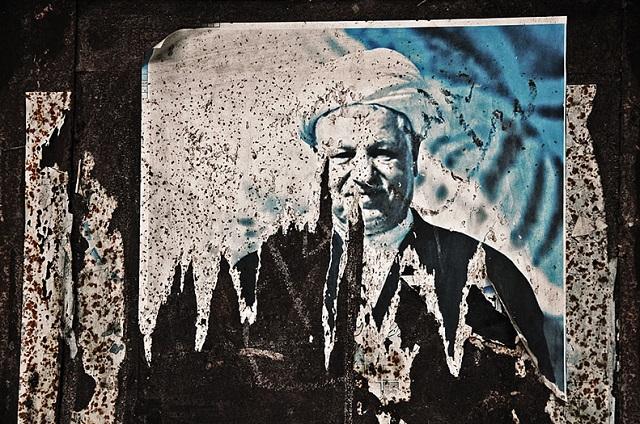
The death on 8 January of Iran’s former President, Akbar Hashemi Rafsanjani, could weaken the political influence of Iran’s reformists and moderates, and potentially threaten President Hassan Rouhani’s re-election bid at this year’s presidential election to be held in May.
Rafsanjani, 82, was an original member of the pre-1979 revolutionary leadership, and from 1980 until his death, held a number of influential appointments in the Iranian government. Initially, he served as both a member and Speaker of Parliament (Majlis) during 1980–89, and as deputy chief of Iran’s armed forces, and at times acting chief, during the latter part of 1980–88 Iran-Iraq war.
From 1989 to 1997, Rafsanjani served two four-year terms as Iran’s president. His immediate predecessor was Ayatollah Ali Khamenei, who succeeded Ayatollah Ruhollah Khomenei as Supreme Leader on the latter’s death.
Rafsanjani also served continuously on both Iran’s Assembly of Experts and Expediency Council, from their establishment in 1983 and 1988 respectively, until his death. He served as Chair of the Assembly during 2007–11, and was Chair of the Council from its beginning. The principal role of the Assembly is to appoint the Supreme Leader. The major role of the Council is to resolve differences between the Guardian Council and parliament, but it gradually evolved into the major advisory body on national policy to the Supreme Leader. The role of the Guardian Council includes interpreting the Constitution and vetting legislation and electoral candidates to ensure consistency with Islamic values.
Rafsanjani’s revolutionary credentials, experience and influence were never in doubt, but his power and influence were often challenged by the conservatives.
A pragmatist, Rafsanjani progressively parted from the broader conservative camp to lead the political reformist movement. As president he sought to bring Iran in from the cold by seeking to establish more collaborative relations with the West, especially the US, on issues of common security concern. He also sought to boost stalled economic development by encouraging foreign investment, and commenced social reforms including lessening Iran’s strict religious codes. Rafsanjani’s successor, Mohammad Khatami, also a moderate, who served as president during 1997–2005, sought to continue Rafsanjani’s reforms.
For both men, the reform process was slowed, largely for ideological reasons by the conservative opposition, and partly for political reasons by Khamenei who saw Rafsanjani as his major rival. Negative responses by the West, especially the US which incorrectly claimed Iran was involved in 9/11, and George W. Bush’s branding Iran of 2002 as a member of the ‘axis of evil’, enabled the conservatives in Tehran to discredit calls for closer Western engagement and other political reforms. With Khamenei’s support, they won power at the 2005 presidential and parliamentary elections.
Mahmoud Ahmadinejad, a hard-line conservative, replaced Rafsanjani, and served two terms as president from 2005 to 2013. His re-election in 2009 was marred by allegations of significant electoral fraud, triggering student demonstrations which were brutally repressed. Ahmadinejad’s presidency was a period of high turbulence, domestically and internationally, and took Iran back into a long period of international isolation.
Keen to reverse the damage caused by Ahmadinejad and reinstate his reformist agenda, Rafsanjani initially proposed to stand again as president at the 2013 elections. But his ambitions were dashed by the Guardian Council, presumably under pressure from Khamenei, which disqualified him as a candidate. Rafsanjani responded by successfully directing his support to the election of Rouhani, a like-minded protégé, as president, and to the return of a parliamentary majority of moderates and reformists.
Had he lived, Rafsanjani could have played an important role in Iran’s future in a number of ways. The first would have been his moderating influence if relations between Iran and the US turn sour now that President Trump is in the White House and Washington backs away from the Joint Comprehensive Plan of Action—the JCPOA or nuclear agreement. A new surge of disillusionment with the US and the West in Iran would boost the electoral prospects of the conservatives. This would be a repeat of the circumstances that brought Ahmadinejad into power in 2005.
The second was the political importance of his support for Rouhani’s re-election, and the return of a parliamentary majority of moderates and reformists at the upcoming May elections. Finally there’s the question of Khamenei’s successor as Supreme Leader. Khamenei, 77, is suffering from prostate cancer, and who replaces him—conservative, moderate or reformist—will determine Iran’s political trajectory. As a most senior member of the Assembly of Experts, Rafsanjani was expected to play a key role in that selection process.
If the conservatives regain power, Iran might again be taken back into the cold. If economic development and social reforms are also seriously checked or reversed, Iran could face serious internal dissent and disruption. There would be no winners, nationally or internationally.
Rafsanjani’s death is certainly untimely, and given the many challenges ahead, his internal influence and counselling on both international and domestic issues will be missed. There’s no immediate successor to fill the gap left by his passing.